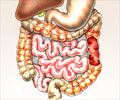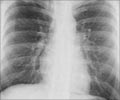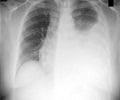
- World Tuberculosis Day on March 24th aims to raise awareness of the epidemic
- The theme for this year is “Unite to End TB”
- Tuberculosis is the world's top infectious killer
- World Health Organization’s End TB Strategy envisions a TB-free world with zero deaths, disease and suffering by 2030
- There are currently 9 million people affected with the disease globally
- 12% of the 9 million are HIV-positive
- India (23%), Indonesia (10%) and China (10%) have the highest number of TB cases
- In 2014, about 190 000 people died of multidrug-resistance tuberculosis in the world
With the availability of medications, the presence of tuberculosis in the developed world reduced to a considerable extent. Medications should be used in combination and for the entire course for a few months, failing which the bacterium can develop resistance and the drugs will be ineffective. Treatment is administered in two phases: the initial intensive phase and the continuation phase. Health workers are trained to dispense the medicines, supervise the drug intake and follow-up with the patients to ensure that they do not drop out of the treatment.
The Bacillus Calmette–Guérin (BCG) vaccine given at birth has prevented serious forms of the disease and has saved several lives over the years. However, it may not provide adequate protection in adults.
In 2014, tuberculosis was responsible for 1.5 million deaths globally. An infectious disease that can be completely cured with treatment and has a vaccine available should not cause so many deaths. Most deaths were noted in the underdeveloped and the developing world like South East Asia and Africa.
Two main factors continuously act as barriers in the elimination of tuberculosis:
- HIV has been one of the main promoters of tuberculosis. HIV decreases immunity, which allows Mycobacterium tuberculosis and related atypical mycobacteria that had been dormant to act up and produce disease. Tuberculosis has been responsible for a substantial number of deaths in HIV patients - around a third of deaths in patients with HIV in 2014 were attributed to tuberculosis.
- The problem of multidrug-resistant tuberculosis MDR-TB has made treatment of tuberculosis even more difficult. The tuberculosis bacterium is sometimes resistant to several standard medications, resulting in ineffective treatment. Alternative medications are also available, however, they have more side effects, and treatment is costlier and more prolonged. Around 500,000 new cases of MDR-TB were noted in 2014, highlighting the seriousness of the situation. An even more severe form of multidrug-resistant tuberculosis is referred to as extensively drug-resistant TB XDR-TB, which adds to the woes of tuberculosis treatment.
- Reduce deaths due to tuberculosis by 95%
- Minimize the number of new cases by 90%
- Make sure that no family suffers due to the expenses incurred due to the treatment
Tuberculosis in India
With a record of over 2.5 million TB cases, India has the highest burden of tuberculosis in the world. The recent emergence of multidrug-resistant tuberculosis (MDR-TB) has made treatment of the disease much more challenging in the country.Currently, there are 121 Cartridge Based Nucleic Acid Amplification Test (CBNAAT) sites that provide a rapid, decentralized diagnosis of MDR-TB across the country. On March 21, the health ministry has acknowledged setting up 500 more machines for diagnosis.
On March 21, the Union Health Ministry has launched a new drug called Bedaquline for the treatment of multi-drug resistant tuberculosis in India. The drug was initially recommended for use in 2014 by the World Heath Organization.
The Ministry has stated that the bedaquline will be introduced across 104 districts in five states of India for the treatment of new drug-resistant TB patients.
The World Tuberculosis Day is observed to increase awareness of the condition and take steps towards achieving eradication of tuberculosis. Some important ways to prevent and treat the infection include the following:
- Make sure your child is vaccinated with BCG vaccine at birth, if the vaccine is included in the immunization schedule of your country. Your doctor may avoid the vaccine if you or your child are HIV-positive, since the vaccine itself could possibly cause tuberculosis infection when immunity is reduced.
- If you suffer from chronic cough, make sure you get yourself checked for tuberculosis. Any delay will make it more difficult to treat, and you will also spread the infection to other people.
- If you are prescribed treatment, make sure you take the full course. If you suffer from any side effects during treatment, you can always contact your doctor who will give you an alternative.
- http://www.who.int/
- http://www.cdc.gov/tb/worldtbday/
- http://www.tbcindia.nic.in/showfile.php?lid=3166
- http://www.tbfacts.org/tb-treatment/














